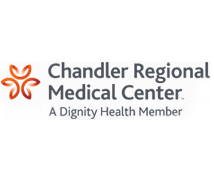Angina
What is angina?
Angina occurs when part of your heart muscle does not receive enough oxygen-rich blood.
What are the common symptoms of angina?
Generally, angina feels like pressure, squeezing, crushing or burning in your chest. Chest pain is considered the most common symptom of angina; however, others symptoms occur frequently. Among these are pain and numbness which is felt in the back, neck, shoulders or arms. Some angina patients have nausea, vomiting, and abdominal pain as their primary symptom.
If a waxy substance called plaque accumulates on the inner walls of your coronary arteries, you may experience angina. Plaque is made up of fat, cholesterol, calcium, and other substances found in the blood. As the plaque accumulation progresses, it narrows and stiffens the coronary arteries, inhibiting the flow of oxygen-rich blood to the heart muscle. If these plaques rupture, they can damage the coronary blood vessel and produce blood clots that obstruct blood flow.
Is angina dangerous?
Yes, angina poses a serious threat to your health. Angina typically occurs when there is a partially or totally blocked artery which can lead to a heart attack.
Is there more than one type of angina?
Each of the four major types of angina has unique symptoms and requires different treatments. These include stable, unstable, variant (Prinzmetal’s), and microvascular angina.
What is stable angina?
The most common type of angina, stable angina, occurs when the heart is forced to work harder than usual. Stable angina has a regular pattern of frequency, severity and duration. It is possible to recognize the pattern of your stable angina and anticipate the occurrence of pain. Stable angina pain usually dwindles after a few minutes resting or after taking your angina medication. While stable angina is not a heart attack, its presence points toward an increase in the odds of a heart attack in the future.
What is unstable angina?
Unstable angina lacks a predictable pattern and may occur more often and/or be more severe than stable angina. Occurring with or without physical exertion, unstable angina pain cannot always be relieved by rest or medicine. Unstable angina is very dangerous. It demands emergency treatment as it signals a heart attack may happen soon.
What is variant (Prinzmetal’s) angina?
Variant angina occurs rarely and is characterized by spasms in a coronary artery. Often producing severe pain, it usually occurs most often between midnight and early morning, while the patient is sleeping. Medicine can be successful in treating this type of angina.
What is microvascular angina?
Episodes of microvascular angina are more severe and of a longer duration than other types of angina. Rest and/or medicine do not always relieve the symptoms of this type of angina. Because microvascular angina isn’t characterized by significant arterial blockages, it is more difficult to recognize and diagnose; nonetheless, it is quite common. Microvascular angina occurs more often in diabetics and women, with approximately 70% of those diagnosed nearing or past menopause. The higher incidence among women may have several causes, including the drop in estrogen level post-menopause.
Is angina a disease?
No, angina is not a disease but rather a symptom that indicates an underlying heart problem. Often, angina is a symptom of coronary artery disease.
What factors increase the likelihood of you experiencing angina?
Various risk factors create a predisposition for angina. Among them are: the use of tobacco, diabetes, high blood pressure, high blood cholesterol or triglycerides, a personal or family history of heart disease, old age, lack of exercise, obesity and stress.
How is angina treated?
Treatment for angina generally requires lifestyle changes, such as controlling high blood pressure, diabetes, exercise/weight loss, and smoking cessation. Certain medications help prevent or alleviate symptoms by improving blood flow to the heart, lowering oxygen needs to the heart, or reducing the heart’s workload.
Is angina a common condition?
As many as 7 million people in the United States suffer from angina. It is most prevalent among those who are beyond the age of 30.











